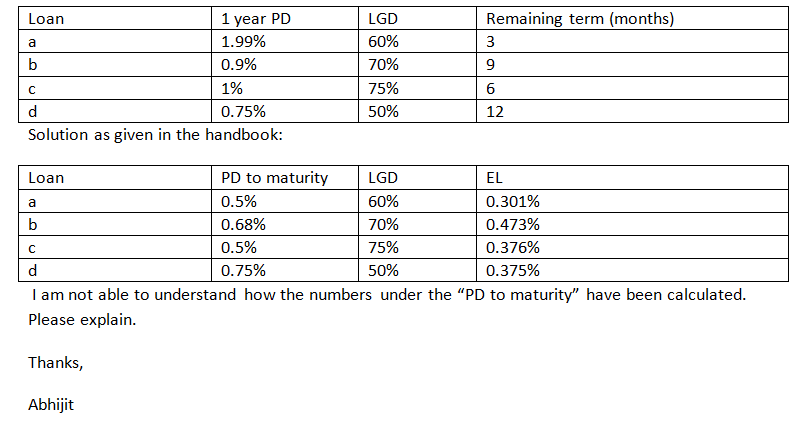hi guys, i am struggling with this. say i am given an annual probabilty of default for a company going insolvent as 0.02. so 2%.
say this client then takes out a 100k , 150 day loan on jan 1st 2018, what is predicted default amount?
am i right in thinking you can model this as bernoulli ? i am not sure how to calcualte this. do i need to find default rate per month first using p_annual = p_month^12 ?? i could rearrange this to find p_month then do (100/days in month)*p_month
say this client then takes out a 100k , 150 day loan on jan 1st 2018, what is predicted default amount?
am i right in thinking you can model this as bernoulli ? i am not sure how to calcualte this. do i need to find default rate per month first using p_annual = p_month^12 ?? i could rearrange this to find p_month then do (100/days in month)*p_month


